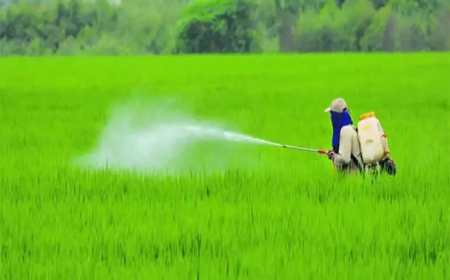CITES Eases Export of Agarwood from India, Benefiting Lakhs of Farmers

CITES Eases Export of Agarwood from India, Benefiting Lakhs of Farmers
In a significant development for the Indian agricultural and aroma industries, the Convention on International Trade in Endangered Species of Wild Fauna and Flora (CITES) has relaxed the export restrictions on Aquilaria malaccensis, commonly known as agarwood. This decision is expected to provide substantial economic benefits to farmers across India, particularly in the northeastern states of Assam, Manipur, Nagaland, and Tripura, where agarwood cultivation is prevalent.
Background and Importance of Agarwood
Agarwood, derived from the Aquilaria malaccensis tree, is a highly valued resource known for its fragrant resin, which is used in perfumes, incense, and traditional medicines. The wood and oil extracted from agarwood are prized in the global market for their unique aroma and medicinal properties, including anti-inflammatory, anti-rheumatic, analgesic, and antioxidant effects.
The species was first listed in Appendix II of CITES in 1995 following a proposal from India at the 9th Conference of the Parties (CoP9) in 1994. This listing aimed to regulate its trade to prevent over-exploitation due to its high market value and demand.
Recent Developments
India successfully advocated for the exclusion of Aquilaria malaccensis from the Review of Significant Trade (RST) under CITES, which had previously imposed stringent export controls. This decision was based on a comprehensive Non-Detriment Findings (NDF) study conducted by the Botanical Survey of India (BSI), under the Ministry of Environment, Forest and Climate Change (MoEFCC). The study assessed the population and sustainability of agarwood cultivation in India, recommending that the species be removed from RST, thus easing export restrictions.
The NDF report emphasized that the harvesting of agarwood should not involve wild populations or protected areas but should be limited to managed sources such as home/community gardens, private plantations, and leased lands. This approach ensures sustainable cultivation and minimizes the impact on natural habitats.
New Export Quota
In conjunction with these findings, CITES has set a new export quota for agarwood products from India, effective April 2024. The quota allows for the annual export of:
- 1,51,080 kg of agarwood chips and powder/sawdust
- 7,050 kg of agarwood oil
This quota aims to regulate and formalize the trade, thereby reducing illegal activities and supporting legal market operations. Previously, the absence of a defined export quota had led to an increase in informal and illegal trade, particularly to the Middle East, raising prices in the global market.
Impact on Farmers and Industry
The easing of export restrictions and establishment of a new quota is expected to greatly benefit farmers involved in agarwood cultivation, especially in Assam, Manipur, Nagaland, and Tripura. These states have significant plantations of Aquilaria malaccensis, estimated to consist of at least 139.89 million plants, according to the BSI study.
The cultivation of agarwood involves both natural and artificial methods of inducing resin production. Naturally, the resin forms due to fungal infections following damage by the larvae of the stem borer Neurozerra conferta. However, to increase yield and quality, artificial inoculation techniques are also employed, which can include physical, chemical, and biological methods. These methods are crucial for optimizing production, particularly in areas where natural infection rates are low.
Challenges and Future Outlook
Despite the positive outlook, challenges remain in ensuring the sustainable and ethical production of agarwood. The high value of the product and previous export bans have historically led to significant illegal trade, with reports indicating seizures of over 1.25 tonnes of agarwood chips and 6 liters of oil between 2017 and 2021 across six Indian states.
The Indian government, through the MoEFCC and in coordination with international bodies like CITES, is focused on creating a controlled and sustainable market for agarwood. This includes developing regulations and monitoring systems to prevent over-exploitation and ensure that the benefits of the trade reach the farmers and local communities involved in its cultivation.
In conclusion, the relaxation of export restrictions on agarwood under CITES and the establishment of a new export quota represent a significant step towards formalizing and supporting the agarwood industry in India. This move is expected to bring economic benefits to lakhs of farmers and contribute to the global supply of this valuable resource, while also promoting sustainable and ethical practices in its production and trade.
(Source The Hindu)
What's Your Reaction?
































































































































